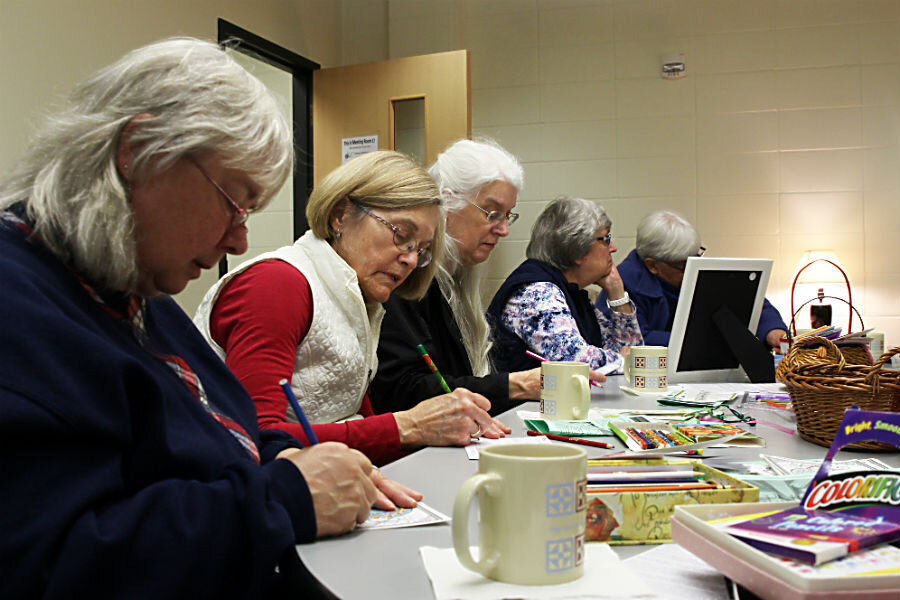Coloring craze brings US adults together
Loading...
Forget coloring alone. Adult coloring-book fans can now meet one another at social events in libraries and Internet meet-up groups.
The American Library Association, for instance, is now offering adult coloring programs to meet the growing interest. Events will be held in cities including New York City, Denver, and Milwaukee.
"People just love this," Jane Henze, the adult-programming director at DeForest Public Library near Madison, Wis., told the Associated Press. “I think they feel successful, like they've finished something.”
The adult coloring phenomenon emerged a few years ago, when artists began to publish intricate coloring books that feature outlined illustrations of just about everything, including flowers, abstract renderings, and even Bill Murray. Now, bookstores are filled with these niche products. Even The New York Times best-selling list currently contains 10 coloring books in its games and activities category.
The appeal of coloring goes beyond its soothing effects, though that certainly plays a role, As The Christian Science Monitor’s Samantha Laine reported in August:
The act of placing color on paper has proved to be a sought-after tactile antidote in this distracted age of social media, calling upon the artist to focus on small details, stay within the lines, and use creativity within predetermined parameters. Add in the feeling of nostalgia, and many find coloring to be a relaxing, stress-free experience.
Ms. Henze has been hosting a free coloring group at her library since this summer. Between 11 and 16 people meet twice a month over snacks and photocopied coloring sheets, and so far, they’ve mostly been middle-aged women.
"The neat thing about it, as far as stress goes, you're concentrating on something, you're not thinking about what's going on at home or at work,” she said.
Perhaps this is why coloring has also become helpful for therapy. Art therapist Carrie Danhieux-Poole from the Froedtert & the Medical College of Wisconsin says coloring could be a method of mitigating anxiety.
In Raleigh, N.C., a Meetup.com group that focuses on mindful living extended their activities to coloring for the first time this month, and it was their best gathering yet. The next one, they say, now has a waiting list.
Sophie Dangtran was one of the participants. She took up coloring as a means to deal with stress following a breast cancer diagnosis. Since doctors have confirmed that she has entered in remission, she says she has noticed that her coloring results have changed.
"I find the healthier I get, the more colorful my designs are," she said.






